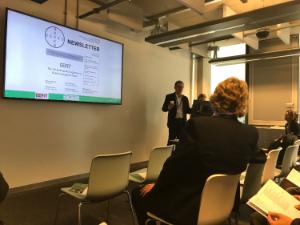News & Events
SECED 2019 - EEFIT Session - EEFIT Missions over time

EEFIT can trace its origins back to 1982 (Booth, 1984; Booth et al., 2011). The founding objectives for EEFIT stated that its purpose was to enable earthquake engineers, architects and scientists to collaborate with colleagues in earthquake-prone countries in the task of understanding and consequently improving the seismic performance of both traditional and engineered structures. Training was to be achieved through observing and documenting the nature of the seismic hazards (ground rupture, ground shaking, liquefaction, landslides and tsunami) and documenting how the built-environment at full-scale actually responded to these seismic hazards. The impact of earthquakes on people was the third main objective. All of these objectives were to be achieved principally by conducting field investigations by a multi-disciplinary team following major damaging earthquakes worldwide and reporting back to the local and international engineering community. Encouraging collaboration between academia and industry to achieve these objectives was an important consideration for EEFIT from the outset. The first EEFIT mission took place soon after the Liege, Belgium earthquake of November 1983 with the first EEFIT presentation of findings to colleagues back in the UK and EEFIT field report taking place in 1984. The most recent EEFIT mission was undertaken in November 2018 following the earthquake and tsunami in Sulawesi, Indonesia. Over the period 1983 to 2019 there has been 37 EEFIT missions – on average 1 mission per year. Over the years 258 individuals have benefited from the experience gained on an EEFIT mission. The earthquake events for which EFFIT missions have been mobilised range in size from the great Mw~9.3 Sumatra, Indonesia earthquake and Indian Ocean tsunami of 2004 to the small Mw~4.0 Folkestone, UK earthquake of 2007.
Last modified: Tue, 08 Oct 2019 11:33:25 BST




